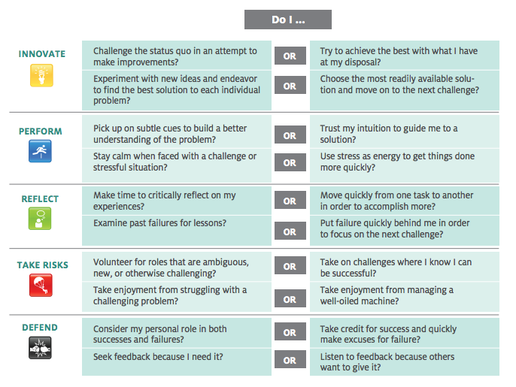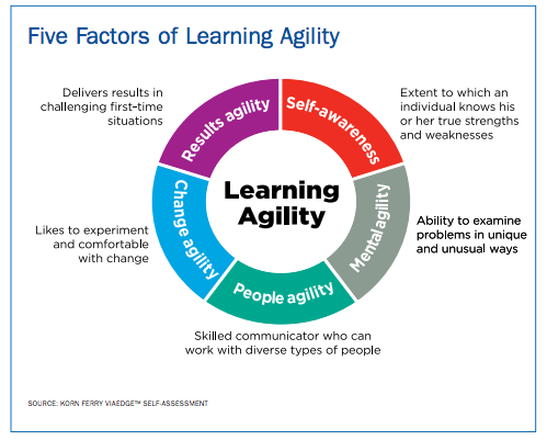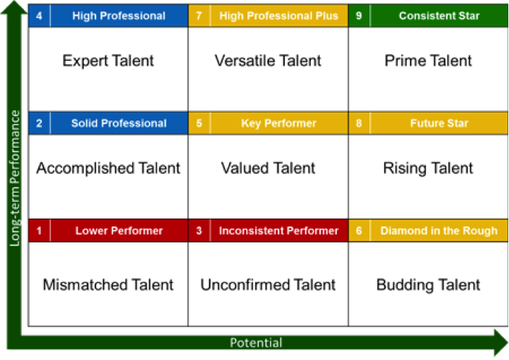Learning Agility for succession planning
‘To succeed in our volatile, complex, ambiguous business world, there is no choice but to master the ability to adapt and learn.’
Cashman, K - Forbes Magazine
Global research conducted by Korn/Ferry International from assessment of nearly 1 million executives demonstrates that one ascends the executive ladder, one needs to become increasingly comfortable with uncertainty and sudden change. As leaders, we have to have the “integrative capability” to weave together and make sense of apparently unrelated pieces of information and ideas, crafting novel and innovative solutions from them. At the same time, one needs to have the confidence to make decisions on the spot, even in the absence of compelling, complete data. The unquestionable qualities needed at the top—openness, authentic listening, adaptability—also indicate that leaders need to be comfortable with and able to embrace the “greyness” that comes from other people’s ideas or situations that arise.
Furthermore, “Talent” is the generic term most often used by businesses to refer to the people who are in the upper ten percent of "value add employees"; those that are delivering greater outcomes to the organisation, and are usually earmarked as “our High Performers.”
The research confirms that what differentiates high value employees is called Learning Agility:
the willingness and ability to be ‘layer on’ new skills and attitudes – to be resourceful in the face of change – to instinctively know what to do when others do not, and to deliver results with speed and flexibility of learning
The research identified seven distinct profiles:
And the very good news is that Learning Agility can be developed; to a degree. It is the key to unlocking our adaptation proficiency. It is “knowing what to do when you don’t know what to do.”
Most importantly, Learning Agility is well accepted amongst HR and OD practiconers to be synonymous with ‘potential to lead’. The ‘silver bullet’ to the perpetual organisational conundrum:
”Who are our bench strength leaders?”
Those employees measured as having higher levels of Learning Agility, once promoted and challenged and developed, are more likely to be successful in delivery of results and in situations of adversity. Without doubt, these people are the genuine organisational leaders of tomorrow…… and beyond.
A little ‘self-test’:
Cashman, K - Forbes Magazine
Global research conducted by Korn/Ferry International from assessment of nearly 1 million executives demonstrates that one ascends the executive ladder, one needs to become increasingly comfortable with uncertainty and sudden change. As leaders, we have to have the “integrative capability” to weave together and make sense of apparently unrelated pieces of information and ideas, crafting novel and innovative solutions from them. At the same time, one needs to have the confidence to make decisions on the spot, even in the absence of compelling, complete data. The unquestionable qualities needed at the top—openness, authentic listening, adaptability—also indicate that leaders need to be comfortable with and able to embrace the “greyness” that comes from other people’s ideas or situations that arise.
Furthermore, “Talent” is the generic term most often used by businesses to refer to the people who are in the upper ten percent of "value add employees"; those that are delivering greater outcomes to the organisation, and are usually earmarked as “our High Performers.”
The research confirms that what differentiates high value employees is called Learning Agility:
the willingness and ability to be ‘layer on’ new skills and attitudes – to be resourceful in the face of change – to instinctively know what to do when others do not, and to deliver results with speed and flexibility of learning
The research identified seven distinct profiles:
- Problem Solvers
- Thought Leaders
- Trailblazers
- Champions
- Pillars
- Diplomats
- Energisers
And the very good news is that Learning Agility can be developed; to a degree. It is the key to unlocking our adaptation proficiency. It is “knowing what to do when you don’t know what to do.”
Most importantly, Learning Agility is well accepted amongst HR and OD practiconers to be synonymous with ‘potential to lead’. The ‘silver bullet’ to the perpetual organisational conundrum:
”Who are our bench strength leaders?”
Those employees measured as having higher levels of Learning Agility, once promoted and challenged and developed, are more likely to be successful in delivery of results and in situations of adversity. Without doubt, these people are the genuine organisational leaders of tomorrow…… and beyond.
A little ‘self-test’:

People high in Learning Agility do four things particularly well:
1. They are critical thinkers who examine problems carefully and make fresh connections.
2. They know themselves well and are able to handle tough situations deftly.
3. They like to experiment and can deal with the discomfort that surrounds change.
4. They deliver results in first-time situations through team building and personal drive.
Within the construct of Learning Agility, there are 5 measurable dimensions:
Mental Agility
Describes people who think through problems from a fresh point of view; are comfortable with complexity, ambiguity and explaining their thinking to others; penetrate complex problems and expanding possibilities by making fresh connections.
People Agility
Describes people who know themselves well, learn from experience, treat others constructively, are cool and resilient under the pressures of change; harness and multiply collective performance.
Change Agility
Describes people who are curious, have a passion for ideas, like to experiment with test cases, and engage in skill building activities; effectively with the discomfort of change
Results Agility
Describes people who get results under tough conditions, inspires others to perform beyond normal, and exhibit the sort of presence that builds confidence in others.
Self-Awareness
The ability to recognise one’s own moods and emotions; to understand the impact they have on others around them; reflective and know themselves well; understand their capabilities to realistically self-assess
Mental Agility
Describes people who think through problems from a fresh point of view; are comfortable with complexity, ambiguity and explaining their thinking to others; penetrate complex problems and expanding possibilities by making fresh connections.
People Agility
Describes people who know themselves well, learn from experience, treat others constructively, are cool and resilient under the pressures of change; harness and multiply collective performance.
Change Agility
Describes people who are curious, have a passion for ideas, like to experiment with test cases, and engage in skill building activities; effectively with the discomfort of change
Results Agility
Describes people who get results under tough conditions, inspires others to perform beyond normal, and exhibit the sort of presence that builds confidence in others.
Self-Awareness
The ability to recognise one’s own moods and emotions; to understand the impact they have on others around them; reflective and know themselves well; understand their capabilities to realistically self-assess
Through Korn Ferry, powered by Lominger, Acumen offer two interventions for the measurements of Learning Agility:
ViaEdge®
Psychometrically developed by 5 PHD psychologists, this online self-assessment tool offers significant validity in the testing of Learning Agility. With a variety of assessment methodologies and ‘in-built’ adjustments for ‘social desirability’, it was tested on over 1000 individuals prior to its public launch.
It has been validated against other established assessments of Learning Agility, and found to have no adverse readings.
ViaEdge® offers 116 questions for assessment, covering behavioural and situational judgement. Taking approx 25 minutes to complete, it offers verified scales in
Choices online®
This upgraded multi-rater assessment now incorporates all five factors of Learning Agility, including 81 items and 27 dimensions that represent behaviours associated with Learning Agility. Administered electronically via Korn Ferry/Lominger’s Global Survey Centre, the Choices™ assessment is a valuable tool for measuring Learning Agility and building a Learning Agility development programme.
Every company’s future depends on the leaders they select. Too often they rely on hunches, guesses and unfounded hopes.
Organisations NEED to now make confident leadership decisions based on the following facts:
1. Chaos is the new norm. Everywhere you look, volatility is reinventing business at an astounding pace.
2. The old ways aren't working. Once there were classic solutions to classic problems. But today’s problems are so completely new, the old solutions are completely inadequate.
3. The evidence is in. The most successful leaders today and tomorrow possess Learning Agility. They learn from experiences, but use that knowledge in new ways for the new challenges they face.
4. Your success becomes their success.
It is recognised that managers perpetually struggle to differentiate between performance and potential. Subsequently, past performance becomes a proxy for potential. We will guide your organisation to clearly define ‘potential to lead’ and then teach you how to calibrate potential objectively. This leads to a more robust talent identification process ensuring that people development is correctly differentiated…… To make the wrong decisions can be very expensive!!
ViaEdge®
Psychometrically developed by 5 PHD psychologists, this online self-assessment tool offers significant validity in the testing of Learning Agility. With a variety of assessment methodologies and ‘in-built’ adjustments for ‘social desirability’, it was tested on over 1000 individuals prior to its public launch.
It has been validated against other established assessments of Learning Agility, and found to have no adverse readings.
ViaEdge® offers 116 questions for assessment, covering behavioural and situational judgement. Taking approx 25 minutes to complete, it offers verified scales in
- Self-presentation
- Response consistency
- Work style counter
- Life experience counter
- Profile alignment
- Overall Confidence Index
Choices online®
This upgraded multi-rater assessment now incorporates all five factors of Learning Agility, including 81 items and 27 dimensions that represent behaviours associated with Learning Agility. Administered electronically via Korn Ferry/Lominger’s Global Survey Centre, the Choices™ assessment is a valuable tool for measuring Learning Agility and building a Learning Agility development programme.
Every company’s future depends on the leaders they select. Too often they rely on hunches, guesses and unfounded hopes.
Organisations NEED to now make confident leadership decisions based on the following facts:
1. Chaos is the new norm. Everywhere you look, volatility is reinventing business at an astounding pace.
2. The old ways aren't working. Once there were classic solutions to classic problems. But today’s problems are so completely new, the old solutions are completely inadequate.
3. The evidence is in. The most successful leaders today and tomorrow possess Learning Agility. They learn from experiences, but use that knowledge in new ways for the new challenges they face.
4. Your success becomes their success.
It is recognised that managers perpetually struggle to differentiate between performance and potential. Subsequently, past performance becomes a proxy for potential. We will guide your organisation to clearly define ‘potential to lead’ and then teach you how to calibrate potential objectively. This leads to a more robust talent identification process ensuring that people development is correctly differentiated…… To make the wrong decisions can be very expensive!!
Acumen will work with your organisation to develop and validate Learning Agility and competency profiles across all levels: executive officers, mid-managers/senior managers, team leader/supervisors, emerging leaders and individual contributors.
“The world of leadership belongs to the most learning agile. Develop your key talent across these dimensions and you will activate enduring human and strategic potential”
References:
1. Cashman, K. Forbes Magazine (2012)
2. De Meuse et al. (2010)
3. Lombardo, M. & Eichinger, R. (1994)
“The world of leadership belongs to the most learning agile. Develop your key talent across these dimensions and you will activate enduring human and strategic potential”
References:
1. Cashman, K. Forbes Magazine (2012)
2. De Meuse et al. (2010)
3. Lombardo, M. & Eichinger, R. (1994)
Additional Reading
| "Talent for Tomorrow: Four secrets for HR Agility in an uncertain world" by Ilene Gochman & Paul Storfer.pdf | |
| File Size: | 2402 kb |
| File Type: | |
| Using Learning Agility to Identify High Potentials around the World | |
| File Size: | 4012 kb |
| File Type: | |
| Korn Ferry Learning Agility Architect | |
| File Size: | 1474 kb |
| File Type: | |
| bayer_success_story.pdf | |
| File Size: | 6637 kb |
| File Type: | |


